Woodland wonder
April 1, 2022
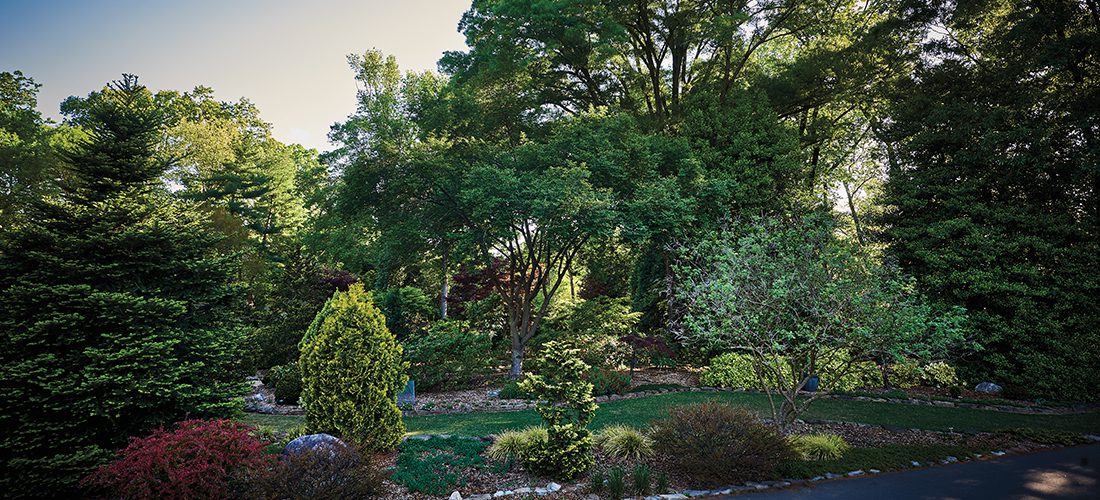
Built over three decades, MapleWalk is an unexpected sanctuary in the heart of south Charlotte and a backyard gardener’s dream.
by Jay Sifford • photographs by Dustin Peck
A great garden, I believe, has four elements: story, magic, art and horticulture. MapleWalk, the south Charlotte garden of Tom Nunnenkamp and Lib Jones, is one such garden. Sitting on three wooded city lots, MapleWalk is home to more than 90 types of Japanese maples and 100 types of camellias, offering four-season interest and spectacular vistas that are quite unexpected in its suburban neighborhood of brick houses and manicured lawns.
The story of MapleWalk began in 1990 with a search for a new home. According to Lib, she and Tom were amateur backyard gardeners who “bought a yard with potential that happened to have a house on it.” Their first priority was to hire landscape designer Ann Watkins to plan the front yard. One of the first plants installed was a Japanese maple, a wedding gift. Years later, the tree was damaged in a storm but lives on as a testimony to the unfolding story of Tom and Lib’s love for each other and for their garden.
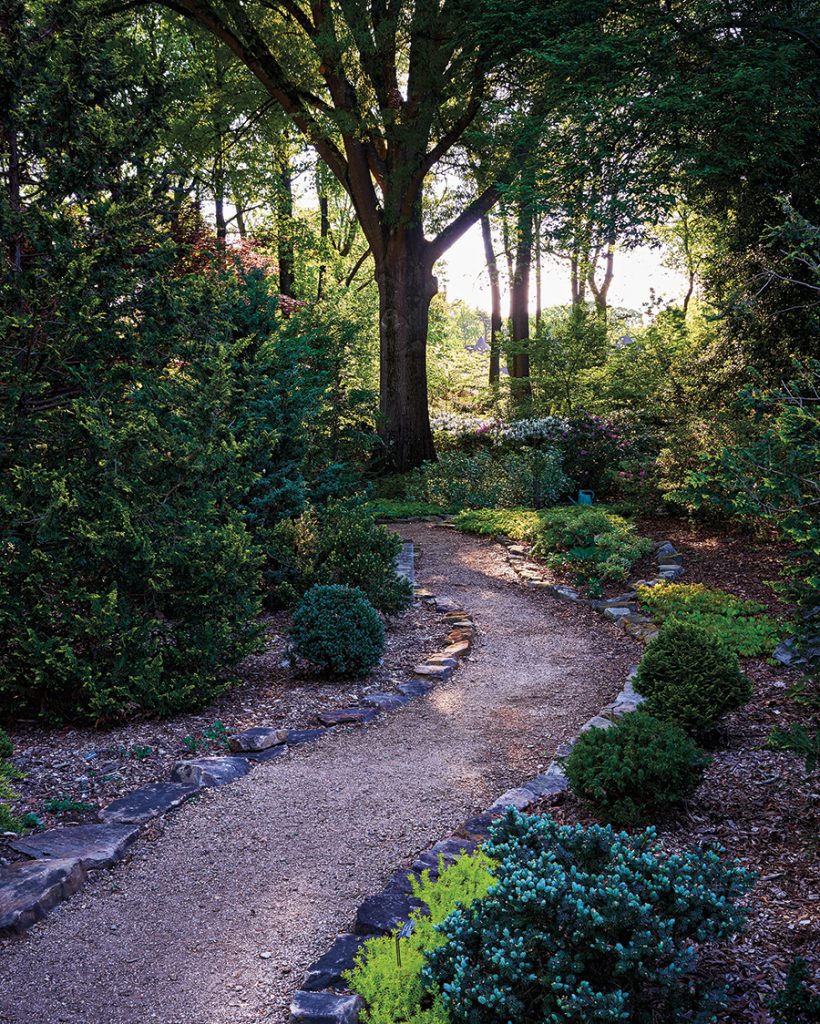
Several years after buying their home, the couple purchased a second lot behind it as a defense against water runoff, and eventually, a third lot with a house that was recently demolished to expand the garden. Much of the back garden, with an almost 30-foot grade change, was covered in poison ivy, Chinese wisteria and English ivy that Tom and Lib painstakingly removed by hand. More than 100 tree saplings were removed, allowing the remaining larger and healthier trees to have their canopies raised.
Removing the lower branches created a ceiling for the garden that feels almost cathedral-like. The high canopy of dappled shade allowed Tom to plant a tapestry of understory trees, including dogwoods, redbuds, shade-tolerant conifers and, of course, his beloved Japanese maples. Forty-five of tons of boulders were installed, both to secure the slope and to artistically craft the contours of the land. Friend and UNC Charlotte horticultural legend Larry Mellichamp offered his advice on layout and plant selection. The result is a well-planned, stylized horticultural treasure that has the appearance of being totally natural.
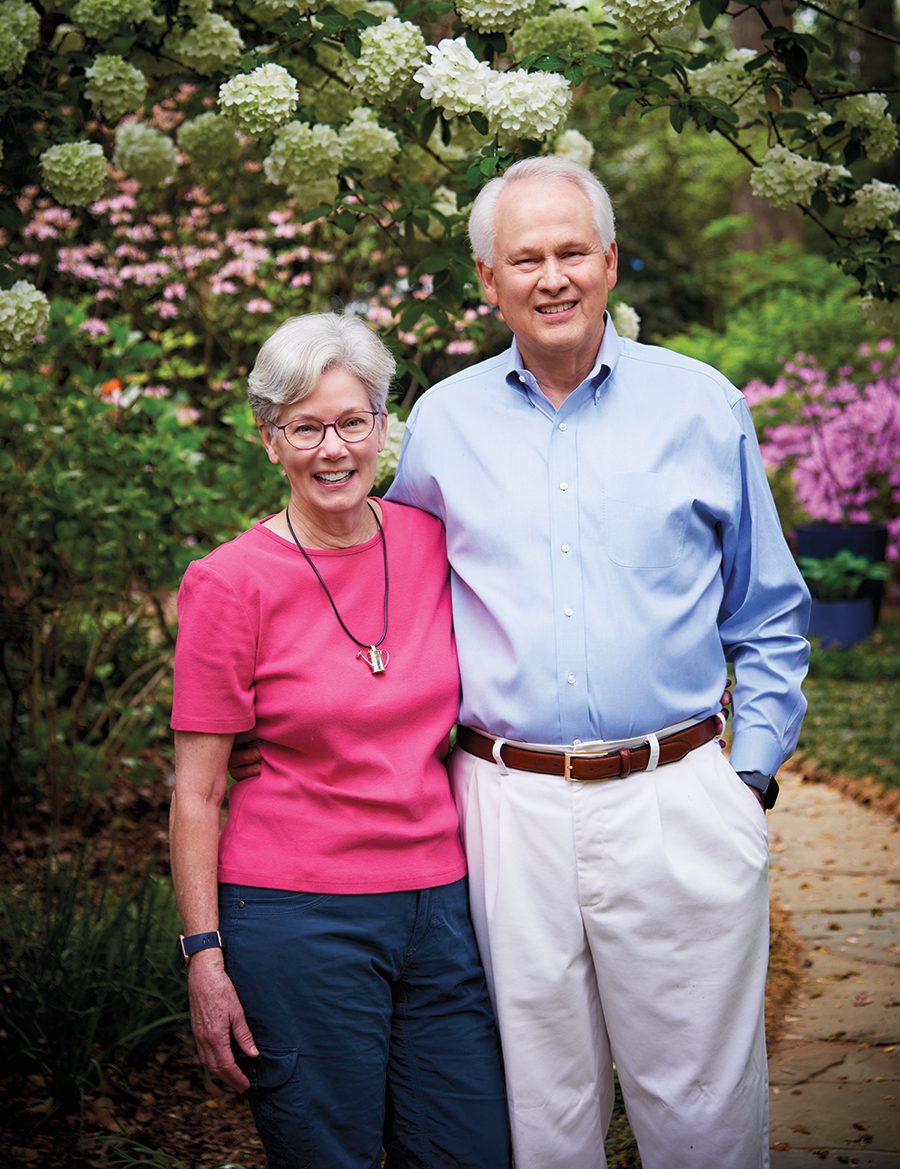
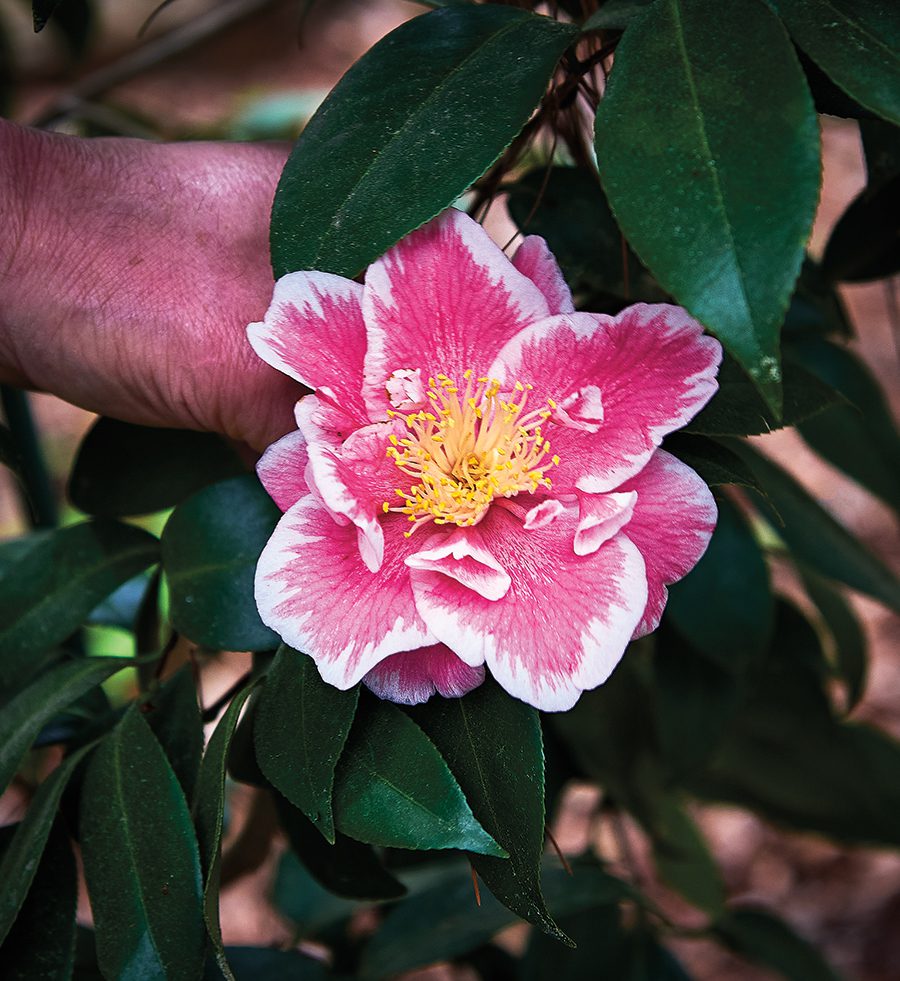
Paths mulched with recycled wood chips traverse the back garden, allowing visitors to explore the many grade changes, hidden vignettes and rare specimen trees that are a signature of MapleWalk. Faux bois railings made of resin reinforced with steel mimic the look of tree branches and provide safe and steady access to the garden for visitors to explore the many perennials that weave a second tapestry at ground level.
It is here, in the perennial beds, where Lib’s passion lies. While Tom specializes in the trees and shrubs, she has created an impressive collection of ferns, trilliums, hostas, irises, lenten roses, coral bells, peonies, carexes and others that will rival anything seen at a major botanical garden. Many are sited in the area of the demolished house, which has become the new entrance to the garden. Here, paths of Tifgrand bermuda and gravel lead to a large turf area that provides negative space to juxtapose the exuberant planting beds and beautiful stone terrace featuring a massive stone slab bench. This is also a garden of remembrance, with several plaques and a bench to commemorate deceased friends and family. A recent addition is a meticulously crafted stone archway that leads visitors into the older, shadier part of the garden. The arch had been a dream of Lib’s for many years.
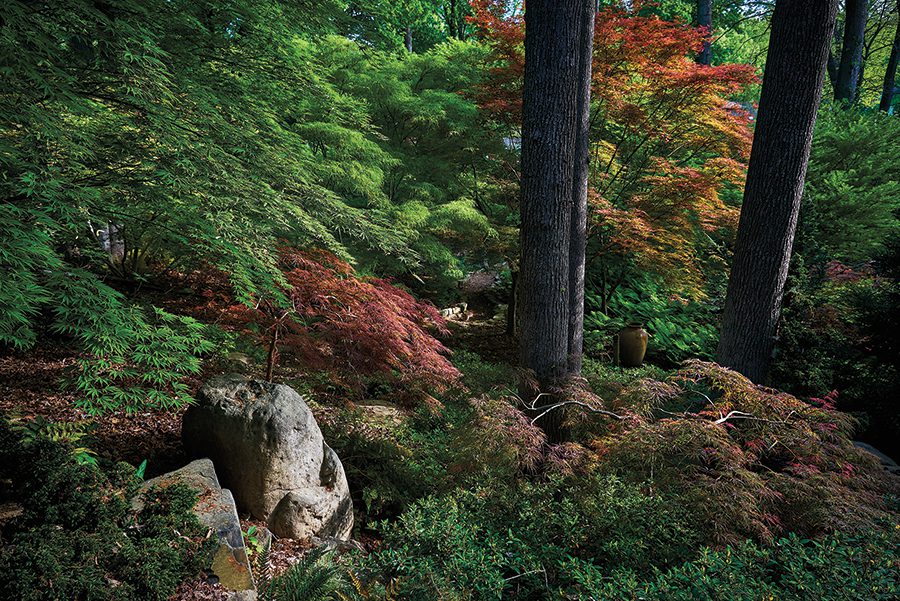
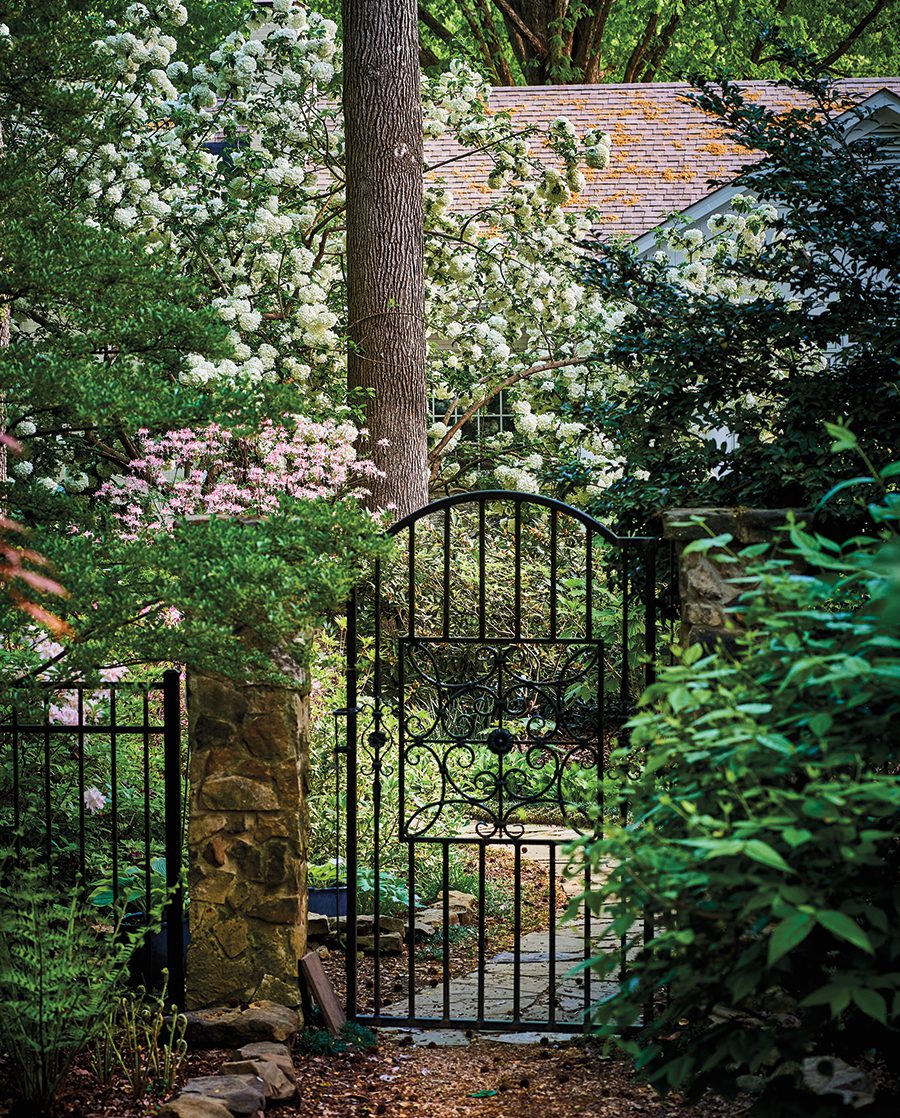
Beyond the arch, much of the remaining lower lawn was recently removed as it suffered from increasing shade provided by the growing trees. In addition to Lib’s moss garden, more than 4,000 pots of dwarf mondo (ophiopogon japonicus ‘Nana’) were installed to create a textural evergreen “lawn” that is both low maintenance and more drought tolerant than a typical turf lawn. The plants are well-suited, Tom says, because the climate of North Carolina’s Piedmont is similar to that of many parts of Asia. Most Southern gardens are filled with these plants, he says, along with Asian maples, camellias and evergreen azaleas. Additionally, many Asian plants seem to be very happy growing alongside the natives. In this way, MapleWalk is truly a classic Southern garden.
The garden also offers a sense of healing.
Lib tells the story of being in California at a good friend’s bedside, saying a final goodbye, and returning home to check the bluebird nest to find four little bald heads greeting her.
This, she says, is a reminder of the ever-present cycle of life.
During the major first wave of Covid, garden chores took on even more meaning for Tom and Lib as their plant-filled labor of love became their refuge and, largely, their therapy. “I need the garden more than the garden needs me,” Tom says. For Lib, the garden has a prevailing sense of home, where she experiences personal fulfillment, peace and a real sense of the essential meaning of life. She revels in the cycle of life that is evident in the flora and fauna.
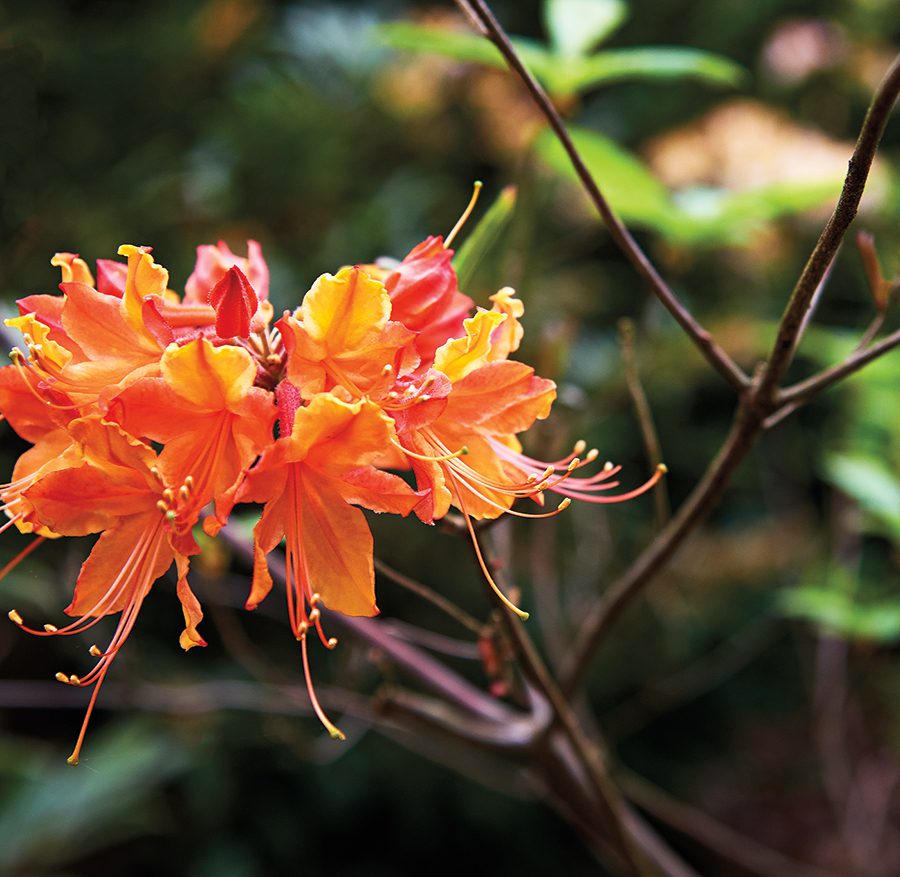

The garden is, in a real way, a bird sanctuary. Fifteen feeders and multiple water sources draw dozens of species of birds. Lib smiles when admitting that Tom doesn’t know how much she spends on birdseed. “That’s a good thing!” she says. She has trained bluebirds to fly to her for mealworms when she whistles and rings a bell.
The garden also offers a sense of healing. Lib tells the story of being in California at a good friend’s bedside, saying a final goodbye, and returning home to check the bluebird nest to find four little bald heads greeting her. This, she says, is a reminder of the ever-present cycle of life.
Visitors to the garden increased during the pandemic. People discovered a need to reconnect with nature for their emotional health and well-being, according to Tom and Lib. Neighborhood children came to see the rescue rabbits that live in a large enclosure in the woodland garden, which Tom refers to as the “Taj MaHutch.” On their journey to the rabbit hutch, Lib says the children begin to develop an appreciation for the plants, as well. Even Harold, the couple’s robotic lawn mower, has become a source of entertainment for the children as well as their fathers as he makes his daily rounds. One of Lib’s favorite perennials to share with children is lycoris, also known as “Naked Ladies.” She will ask the children if they’d like to see the naked ladies in the garden, and their eyes will grow large before giggles ensue. Another favorite to share with young visitors is Platycodon grandiflorus, the balloon flower: Picking a bulging bud, squeezing it like a tube of toothpaste, and seeing the bud pop like a balloon delights them.

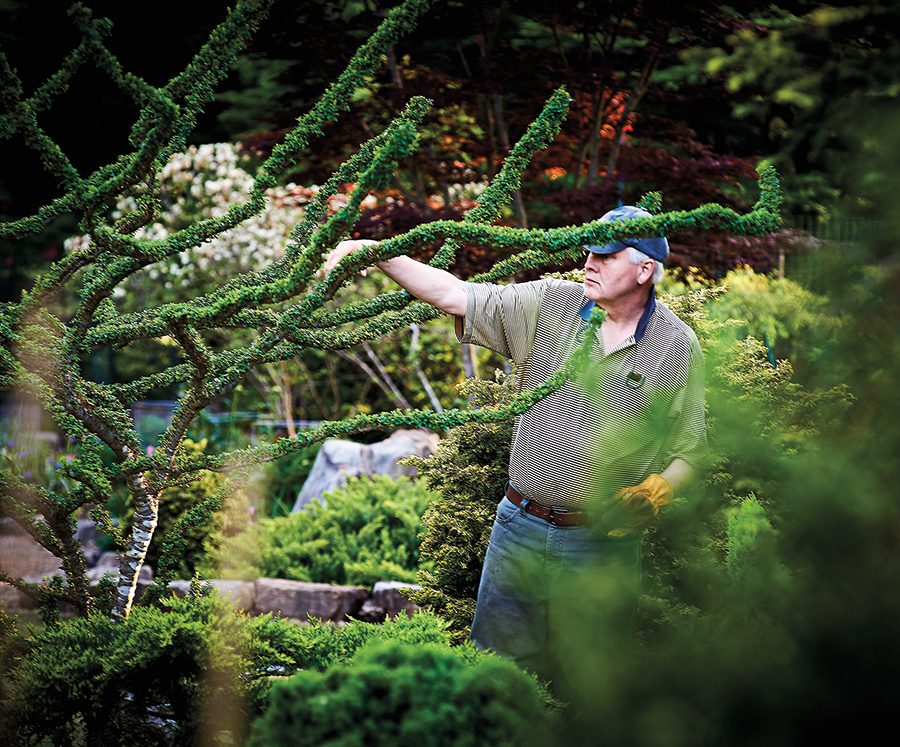
All great gardens have a distinct personality. Tom describes MapleWalk as eclectic, inspirational, nurturing and spiritual. “Getting my hands dirty is a spiritual exercise for me,” he says. To Lib, the garden is playful and tranquil. On any given day, visitors can be spotted in the garden reading, writing, meditating and praying. It is as though each person finds his or her own value in the tranquility that is MapleWalk. Tom and Lib rarely vacation because, in a sense, this garden, forged by love, passion and years of hard work, provides that sense of respite. And that is enough. SP
Tom and Lib invite visitors to MapleWalk, located on Kingswood Road in south Charlotte. They prefer for a first visit to be part of a tour, such as the upcoming Charlotte Garden Club’s Art in the Garden tour on May 14 and 15. They ask that visitors be respectful of the neighbors and not park on lawns. Visit their website maplewalkgarden.com to schedule a tour.
Jay Sifford is a Charlotte-based landscape designer who specializes in contemporary, Asian and transitional gardens. His work has been featured in Southern Living, Country Gardens and Fine Gardening, as well as Houzz and several books.
